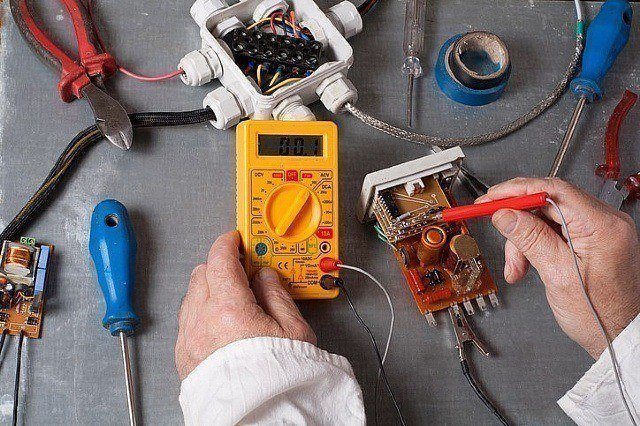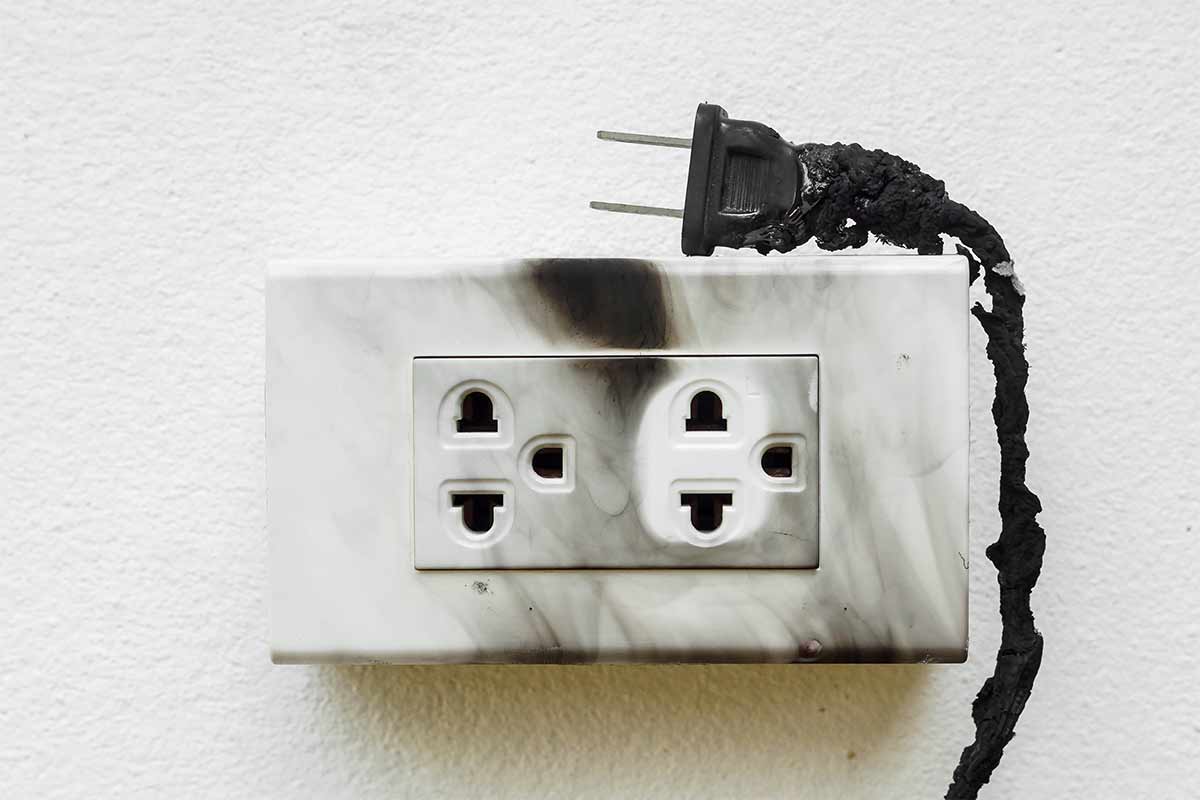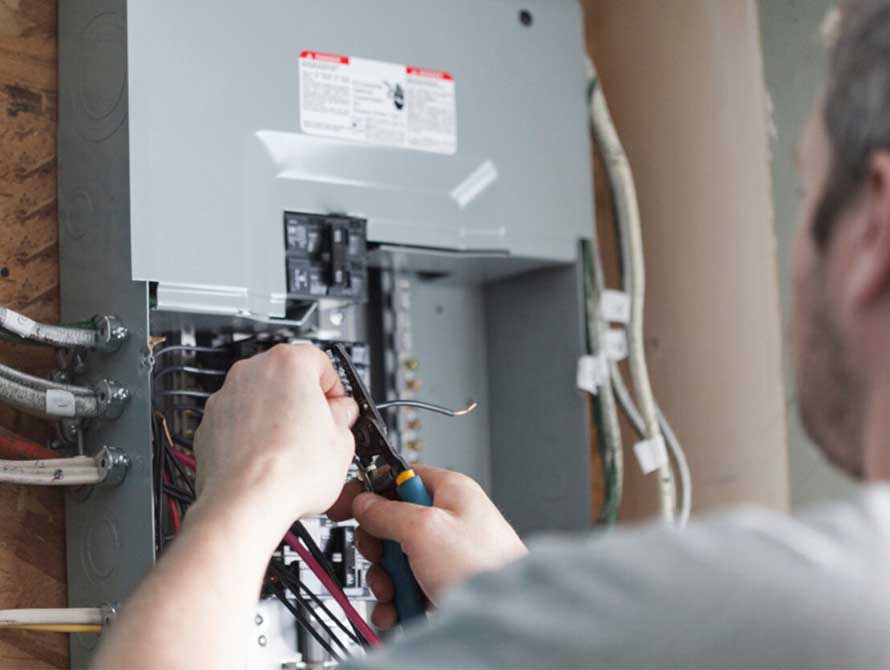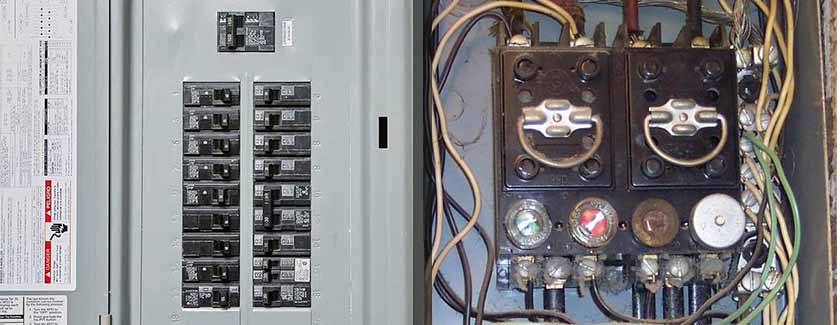Thinking of upgrading your electrical panel or service? Some things you should know
Just like many other electrical contractors (ECs), I get numerous estimate inquiry calls for electrical panel or service “upgrades”. Service upgrades are the mainstay for many ECs businesses–and they are very good at doing them quickly, and with excellent quality
However, don’t be fooled. Just because an EC has the experience doesn’t mean that are actually good, reputable, or licensed electrician. As with any other contractor you must do your due diligence. Before hiring anyone, you should know how to spot a shady or unlicensed electrician. And of course, you should also know how to hire a good electrician
One of the big topics of discussion revolves around future home improvement plans. It’s important for the EC to ask about the homeowner’s future plans. What other reno work do they want to do? Does this support their decision to get a service upgrade?
You are planning to get a hot tub within the next five years to accompany your backyard landscaping remodel. Your Electrician must ensure that your panel is large enough to fit more breakers, or your service is big enough to handle the additional load.
The code details the demand requirements for residential (single-family), commercial residential (multi-family), commercial and other applications. Section 8 Circuit Loading and Demand Factors of the CEC is most helpful for homeowners. It primarily deals with what size your electrical service is required to be based on

tips for upgrading home’s electrical system
Wire size is counterintuitive
The larger the gauge number, the smaller the wire. Eighteen-gauge wire is smaller than 12-gauge wire. The larger the wire, the greater the load it can handle safely without getting hot or causing a fire
Generally a 14-2 Romex cable will serve most outlets
This means two insulated 14-gauge wires and one bare wire encased in a rubber sheath. The black wire is the “hot” wire; the white wire is the neutral wire; and the bare wire is the ground wire. It’s suitable for loads up to 15 amps.
Generally, outlets serving the kitchen and dining room should be 20-amp circuits wired with 12-2 Romex
This is because these circuits will likely take appliances that draw greater amperage
Outlets and switches within a certain proximity to a sink or other water source must be protected by a ground fault circuit interrupter (GFCI)
A GFCI breaks the circuit even when a minute amount of water is present. This safety device prevents electric shock and in extreme cases prevents death. Plugs installed in basements, garages, outdoors and bathrooms also require GFCI protection.
Electric dryers require a 30-amp outlet protected by a 30-amp circuit breaker, while an electric oven mandates a 50-amp and 8-gauge wire protected by a 50-amp breaker

How to Upgrade an Electric Meter and Panel to 200-Amp Service
Working inside an electrical panel is dangerous and is best left to a professional electrician.
Ensure that power is off to the entire building, which may involve more than just shutting off the main breaker
Have utility company to disconnect electrical cables from the house. Remove the glass meter from the meter socket
Unscrew meter socket from side of house, then use cable cutters to sever the cable connected to the socket. Enlarge existing cable hole in wall using a cordless drill and 3-inch-diameter hole saw
Bore through the rim joist using an extension shaft and 2-inch-diameter hole saw. Attach a length of 200-amp SE electrical cable to the new meter socket
Feed the SE cable through the hole in the wall and then screw the meter socket to the exterior of the house. Use a torpedo level to ensure the socket is level. Install the new PVC weather head and conduit to the exterior wall, directly above the meter socket. Secure the conduit to the meter socket using PVC cement. Fasten the conduit to the house with U-shaped plastic clips.

Signs You Might Need an Electrical Panel Upgrade
The electrical panel is an essential component of your home’s electrical system. Within the panel are circuits, which carry electricity throughout your home to outlets, lights, and appliances. The number and size of the circuits determine your home’s electrical capacity.
If you’re experiencing electrical problems like the ones you’ll learn about in this article, it might be time for an upgrade. The first step in the upgrade process is determining your home’s electrical load. Do you have enough amps to meet your electrical needs? If you think about electricity like water flowing through your home, an amp is the rate at which electricity flows. A few decades ago, 60 amps was enough to suit the needs of the average American household. Today, 100 amps is standard in the average home, with larger homes that use a lot of electricity needing 150 to 200 amps.
Signs of Electrical Problems in Your Home
Be on the lookout for any of the following signs of a possible problem. If your home is experiencing any of these issues, call a professional to inspect your electrical system, because it might be time for an electrical panel upgrade.
Electrical shocks. Mild shocks and tingling can mean that the wiring is defective or that it was improperly installed. If this is the case, there’s a risk of ‘electrical leakage’ when you touch the switch or outlet.
Burning odors or sparks. The occasional spark is not unusual, but large or frequent sparks can be signs of deteriorated wiring or a faulty circuit. Also pay attention to warm or discolored outlets. Whether the cause is faulty wiring or an overloaded circuit, you’ll want to talk to an electrician about these issues.

Should I Upgrade My Electrical Panel?
Should I upgrade my electrical panel? The electrical panel remains one of the most essential components of the house. The electrical panel brings comfort and convenience to the residents in the form of electricity. This device is responsible for providing power throughout the entire house. After some time, the electrical panel becomes old or outdated. At this point, you are faced with the question: should I upgrade my electrical panel? There are various kinds of electrical panel upgrade. You can upgrade electrical panel to 200 amps. You can also replace fuse box with breaker panel. Continue reading to discover more about electrical panel replacement and upgrade.
Your Home is Old
Old residential apartments offer cozy and retro atmosphere. This is not present in a modern home. However, these older apartments with obsolete electrical panels may not be able to support your modern electrical needs. If your old home has a 60-amp electrical panel, you may need to upgrade electrical panel to 200 amps. This way, you can use modern electrical equipment you need.
Introduce New Appliances
Furthermore, outdated electrical panels may not be able to handle the workload required to power an entire home of new major appliances. This includes your refrigerator, air conditioning unit, hot tub, dryers, water heaters, and washing machine. The majority of these electrical appliances require a 240V circuit. If you want to introduce new appliances, electrical panel replacement or upgrade will be a good idea
Replace Fuse Box with Breaker Panel
What’s more, fuses have become outdated. Circuit breakers are now more efficient. They do not trip off due to overload. An electrical panel replacement offers you an excellent opportunity to replace fuse box with breaker panel. In case you are wondering why should I upgrade my electrical panel? Then, you may need to do so to replace your fuse-based electrical system with circuit breaker.
Prevent Potential Electrical Fires
Over time, over-crowded connections can turn to loose connections. Thus, causing a wiring fault which can potentially lead to electrical fires. Electrical panel upgrade can help prevent possible electrical fires